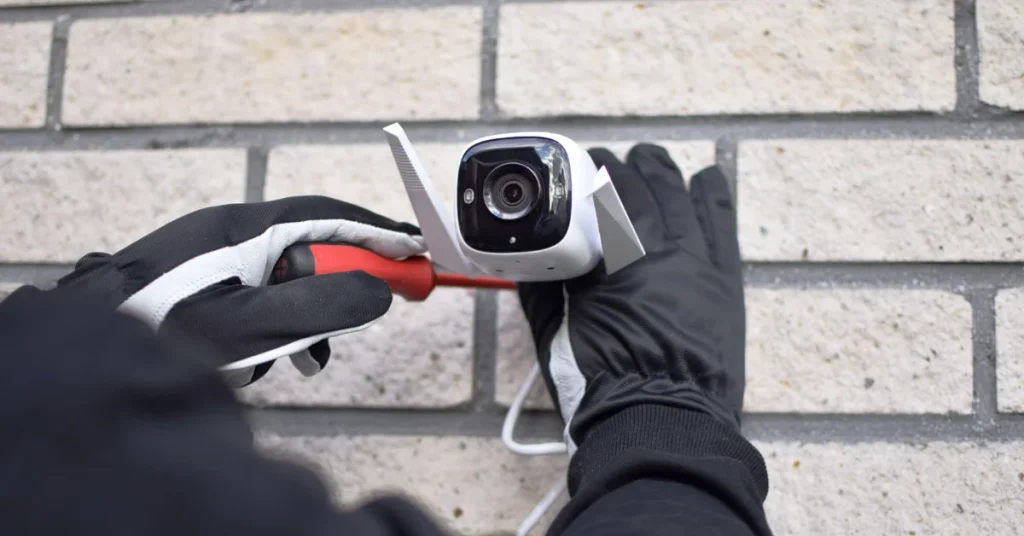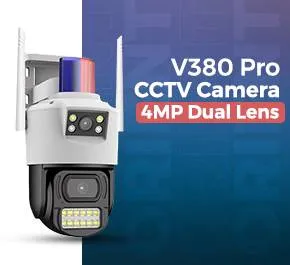Common Issues with Wireless CCTV Cameras and How to Fix Them

CCTV cameras are widely used and cost-effective security tools, but their effectiveness depends heavily on the reliability and quality of the footage they capture. Clear picture quality is critical, as even minor issues, like flickering, can result in missed details such as a thief’s face or a vehicle’s license plate.
Modern CCTV cameras are durable, user-friendly, and significantly more advanced than thirty years ago. However, even the most high-end models from reputable manufacturers can encounter problems. Many of these issues are often caused by improper installation or configuration.
Scroll down to discover valuable insights into 8 common wireless CCTV camera problems and simple solutions to fix them. Let’s dive in!
1. The Colors on My Camera Are Off
If your CCTV footage resembles those strange psychedelic rock videos from the 1960s, it likely has a white balance issue. A white object appears white to your eyes, even under non-white light. Our eyes perceive various colors, while our brains adjust to lighting conditions.
Cameras replicate this through a “white balance” setting, which can be adjusted manually or automatically. Correct white balance is vital for natural-looking colors in photos. Incorrect settings cause distorted colors; for example, a white object may appear blue or yellow. Proper adjustment ensures the colors in your photos are accurate and lifelike.
How to Fix It
- If your camera is for indoor and outdoor use, ensure it’s set for outdoor conditions. This might not be a global setting but rather a color adjustment.
- If your camera has an automatic white balance (ATW or AWB), angle it down to minimize sky reflection. If colors distort with specific ambient light, like streetlights, reposition the camera away from the light source.
- If repositioning fails, disable ATW or AWB and manually adjust white balance.
- For cameras lacking ATW or AWB, manually adjust white balance. If available, tweak color settings like hue or gamma until the colors appear correct.
Repeat this exercise under various lighting conditions until you find a consistent setting. If you need to reposition the camera, ensure it covers the necessary areas.
Remember, cameras have limited color ranges, and depending on the sensor, some may not capture the right image in all lighting conditions.
2. Only Get Black and White Images
Two main reasons why color CCTV cameras produce black-and-white footage:
- CCTV cameras only capture color in high ambient lighting.
- Night vision cameras illuminate with infrared LEDs but cannot distinguish colors in that light.
Thus, even color cameras show black-and-white images in the dark. Some high-end models support limited color in low lighting, but their effectiveness is limited.
How to Fix It
- Ensure ambient lighting matches your CCTV camera’s requirements. If not, consider adding light sources before changing the camera.
- With sufficient light, ensure the optical path is clear and check for camera damage. If your camera outputs analog, composite, or component video signals, ensure the input type matches the output.
- Incorrect connections can lead to a black-and-white picture instead of a black screen. Some monitors require manual configuration to set the right mode for video inputs.
A test monitor can help: if you see a color image, the camera is likely fine. If the lighting is good and the connectors are fine, contacting the manufacturer might be your best option.
3. Camera Not Turning On
It can be annoying when your camera refuses to turn on. This small issue can usually be traced back to a few possible causes. First, ensure the power outlet works properly; you can easily check this by plugging in another device.
Look at the camera’s power adapter; there might be some visible damage. You could also try using an adapter that works well with your camera.
How to Fix It:
- Verify the power outlet’s functionality.
- Inspect all connections for looseness or damage.
- Test it using a different power adapter.
- If nothing works, consult the manufacturer’s support.
If that doesn’t work, don’t worry! You can easily find a new CCTV camera at a great price in Pakistan.
4. No Video Feed
An activated camera that fails to transmit video can be frustrating, and this issue occurs frequently. It generally relates to connectivity problems.
Sometimes, cables become loose over time, especially in installations exposed to changing weather conditions. Additionally, damaged cables might lead to an intermittent or complete video signal loss, which we want to avoid.
How to Fix It
- Check all cable connections, ensuring they’re secure.
- Inspect cables for any visible damage.
- Test it with a working cable.
- Verify network settings if using IP cameras.
Knowing the various types of wireless CCTV cameras can make troubleshooting easier. Each type may come with special connectivity needs, so being informed helps in fixing issues more smoothly.
5. Motion Detection Not Working
Ineffective motion detection can result in missed events or excessive false alarms. Improper sensitivity settings can cause the system to ignore relevant motion or trigger too often.
Additionally, obstructions in the camera’s view can interfere with detection.
How to Fix It
- Review and adjust motion detection sensitivity settings.
- Clear any obstructions from the camera’s view.
- Ensure the detection zones are properly configured.
- Update the camera’s firmware if available.
6. Check Cabling
This problem is quite common with wireless CCTV cameras. Cables can easily get tangled for several reasons. Maybe someone tried to adjust the camera, or there was a slight mix-up while setting it up. Sometimes, if the camera isn’t positioned right, it may not turn on or show any information.
But don’t worry, we’ll help you sort it out.
How to Fix It
- Ensure that the cables are not only straight but also securely intact. Loose cables or knots can lead to significant issues, potentially causing the problems you are experiencing.
7. Upgrade Firmware
Many security cameras require regular updates and upgrades to their latest firmware to ensure they function flawlessly without any issues. If you notice any unusual behavior from the security camera, such as connectivity problems or failure to record, there may be an underlying issue with the firmware.
Keeping firmware up to date is important for optimal performance.
How to Fix It
- Make sure your camera is updated. You can easily do this by connecting to VMS and visiting the camera’s web page.
8. Connection Problems
Cameras that keep disconnecting and reconnecting can easily miss out on important moments. This can occur when weak Wi-Fi signals or too much network traffic create frustrating intermittent connections.
Other electronic devices or physical barriers can sometimes interfere, blocking the wireless signal signals.
How to Fix It
- Take a moment to check your network signal strength, and if you find it lacking, you might want to think about using a Wi-Fi extender to boost it
- Make sure that your network is up to the task of handling the bandwidth needs of your cameras.
- If any devices could interfere, consider moving them to a different spot.
- Switching to a wired setup for an even more stable connection could be a great choice for performance.
Wrapping It Up: Troubleshooting Wireless CCTV Camera Issues
Wireless CCTV cameras often encounter issues once they are installed and in use. These common problems can affect nearly every CCTV camera at some point. Fortunately, there’s always a solution, and most issues can be resolved with quick and easy fixes.
If something doesn’t work as expected, you can always refer to the user manual or reach out to the manufacturer’s support team for assistance.
Lets's Get Social
We are a dedicated professional company that deliver high-quality cameras all over Pakistan






